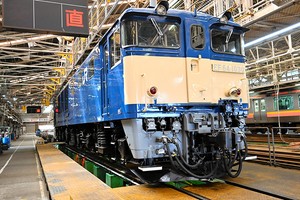April 4, 2023 at 15:42 JST
 The logo of Toshiba Corp. seen in Kawasaki, Kanagawa Prefecture (Asahi Shimbun file photo)
The logo of Toshiba Corp. seen in Kawasaki, Kanagawa Prefecture (Asahi Shimbun file photo)
Toshiba Corp. has accepted a buyout offer from a group of Japanese companies led by a private equity firm. The deal will allow the embattled conglomerate to restructure itself under new management.
Still, many questions remain, such as whether the deal will finally put an end to many turbulent years of messed-up company management. In this regard, Japanese companies should also ask themselves what they can learn from Toshiba’s debacle.
In total, 23 companies, including financial institutions and a private equity firm, will invest in the consortium to buy out Toshiba in a 2-trillion-yen ($15 billion) takeover bid, which will materialize if two-thirds of the shareholders accept. That will remove the influence of activist shareholders who have exerted huge influence in the company’s management due to their large stakes.
Toshiba, according to analysts, must eventually pay back around 1 trillion yen in bank loans, or about half of the funds raised to finance the takeover.
Toshiba’s management problems first surfaced in 2015 when rampant accounting irregularities were revealed. In 2017, Toshiba’s U.S. nuclear power subsidiary went bust, leaving the Japanese parent company stuck with huge debts. To avoid delisting due to its negative net worth, Toshiba turned to foreign investors, including activist funds, for a 600-billion-yen capital injection.
Toshiba then sold off some of its businesses, including its competitive and profitable semiconductor unit, to improve its financial standing. As a result of the radical restructuring, the scale of the company has halved, and its future remains unclear.
Now, six years after it came under the control of foreign investors, Toshiba is about to be delisted from the stock market as it remains deep in debt. The dismal state of the company clearly shows it made a series of misguided management decisions in response to its financial troubles. Successive management teams also bear a heavy responsibility for the company’s downfall.
It should also be noted that the activist shareholders who constantly pushed the company to return more profits to shareholders and do more to bolster Toshiba’s corporate value quickly only made things worse by creating serious management confusion.
In explaining its reasons for accepting the buyout proposal, Toshiba pointed out that “the existences of multiple large shareholders with different views and ideas” caused frequent management reshuffles and radical changes in management policy.
Outsiders dispatched to sort things out account for half of the company’s current board members. They also head a special committee set up to map out ways to turn the company around. The committee has already stated that the buyout will help raise the company’s value.
“Acquiring a unified leading shareholder” will be beneficial to the firm’s efforts to rebuild its business, they said. This is tantamount to stating that the behavior of shareholders, who are also members of the board and head a committee, has hampered the company’s regeneration.
Under the companies law, the general meeting of shareholders constitutes a company’s supreme decision-making organ. The corporate governance code compiled by the Financial Services Agency and the Tokyo Stock Exchange calls on corporate management to engage in “constructive dialogue” with shareholders to secure sustained growth and a medium- to long-term rise in corporate value. Such governance norms may work well and help companies grow in some cases.
But the Toshiba saga shows that “constructive dialogue” between management and shareholders is simply impossible if major shareholders focus solely on gaining short-term profits. The key question facing companies is how to secure good corporate governance without being preoccupied with keeping shareholders satisfied. This is a management challenge that is even more important now because of the growing influence of activist shareholders.
--The Asahi Shimbun, April 4




















A peek through the music industry’s curtain at the producers who harnessed social media to help their idols go global.
A series based on diplomatic documents declassified by Japan’s Foreign Ministry
Here is a collection of first-hand accounts by “hibakusha” atomic bomb survivors.
Cooking experts, chefs and others involved in the field of food introduce their special recipes intertwined with their paths in life.
A series about Japanese-Americans and their memories of World War II